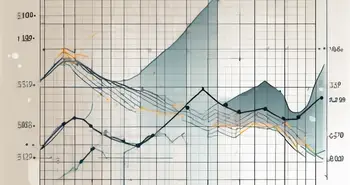Understanding a Trading Journal and Its Effective Utilization

Trading in the financial markets can be an exhilarating experience. The adrenaline rush of making profitable trade decisions can be addictive. However, to be consistently successful as a trader, it is crucial to have a systematic approach and a well-structured plan. One powerful tool that can aid traders in achieving their goals is a trading journal. In this article, I will take you through the ins and outs of a trading journal and show you how to effectively utilize it to enhance your trading performance.
What is a Trading Journal?
A trading journal is a record-keeping tool used by traders to document their trades and trading activities. It is a personalized diary where traders can log their trades, strategies, thoughts, and emotions related to their trading experiences. It serves as a valuable resource for self-reflection and analysis, enabling traders to learn from their successes and failures.
Keeping a trading journal can be likened to keeping a diary of your trading journey. It allows you to track your progress, identify patterns, and make informed decisions based on past experiences. It is a powerful tool that can help traders improve their skills and develop a disciplined approach to trading.
Traders often find it helpful to have a dedicated notebook or digital document specifically for their trading journal. This allows for easy organization and retrieval of information when needed. Some traders even use specialized trading journal software that provides additional features and analysis tools.
The Basics of a Trading Journal
At its core, a trading journal should capture essential details of each trade, such as the date, time, underlying asset, entry and exit points, position size, and profit/loss. These details provide a snapshot of the trade and serve as a reference point for future analysis.
However, a trading journal goes beyond just recording basic trade information. It should also provide traders with ample space to include their observations, market conditions, and any other relevant information. This additional context helps traders understand the factors that influenced their trades and allows for a more comprehensive analysis.
For example, a trader may note in their journal that they entered a trade based on a specific technical indicator signal. They can then analyze whether the indicator was accurate or if there were other factors at play that influenced the trade outcome.
Key Components of a Trading Journal
To make the most of your trading journal, consider including various key components. These components can help you create a comprehensive document that can guide your decision-making process and help you stay disciplined in your trading activities.
One important component is defining your trading goals. This can include both short-term and long-term goals, such as achieving a certain percentage of returns within a specific time frame or mastering a particular trading strategy.
Another crucial element is establishing risk management rules. This involves determining the maximum amount of capital you are willing to risk on each trade and setting stop-loss levels to limit potential losses. By including these rules in your trading journal, you can ensure that you adhere to your risk management strategy consistently.
Additionally, it is beneficial to outline your trading strategy and trading plan in your journal. This includes detailing the indicators, patterns, or other factors you rely on to make trading decisions. By documenting your strategy, you can evaluate its effectiveness over time and make necessary adjustments.
Furthermore, you may also want to include a section in your trading journal for trade reviews. This allows you to reflect on your trades, analyze what went well and what could be improved, and learn from your mistakes. By reviewing your trades regularly, you can identify patterns and refine your approach to trading.
A trading journal is a dynamic document that evolves as you gain experience and knowledge in the markets. It is a valuable tool that can provide insights into your trading performance, help you identify areas for improvement, and ultimately contribute to your growth as a trader.
The Importance of Keeping a Trading Journal
Now that we understand what a trading journal is, let's explore why it is so crucial for traders to keep one.
Enhancing Trading Discipline
One of the primary benefits of maintaining a trading journal is that it cultivates discipline in your trading routine. By documenting each trade, you can evaluate whether you followed your predefined trading plan and adhered to your risk management rules. It serves as a powerful reminder of the importance of discipline in trading and helps you develop a structured approach.
Tracking Trading Performance
Another essential aspect of a trading journal is its ability to track your trading performance over time. By recording your trades and their outcomes, you can analyze your strategies and identify patterns or recurring mistakes. This analysis allows you to fine-tune your approach, eliminate unproductive habits, and focus on strategies that produce consistent results.
How to Effectively Utilize a Trading Journal
To fully harness the potential of a trading journal, it is essential to use it effectively. Here are a few tips to guide you:
Regularly Updating Your Trading Journal
Consistency is key when it comes to journaling. Make it a habit to update your trading journal after every trade. This ensures that you capture your thoughts and emotions while they are fresh, providing you with accurate insights into your decision-making process.
Analyzing Trading Patterns and Trends
Don't just use your trading journal solely as a record-keeping tool; leverage it for analysis. Regularly review your journal to identify patterns or trends in your trading activities. Are there specific strategies that consistently generate profits? Are there certain market conditions that lead to losses? By answering these questions, you can refine your trading approach and maximize your potential for success.
Common Mistakes in Using Trading Journals
While a trading journal can be a powerful tool, many traders make common mistakes when utilizing it. Let's explore a few of these errors to ensure you avoid them.
Inconsistent Journaling Habits
One of the most significant mistakes traders make is sporadic journaling. Consistently maintaining your trading journal is crucial for its effectiveness. If you only update it sporadically, you may miss out on crucial insights that could help you improve your trading performance.
Overlooking Important Trading Details
Another mistake traders often make is failing to record essential trading details. Be meticulous in documenting all relevant information, including your emotions, market conditions, and any external factors that may have influenced your trading decisions. The more comprehensive your trading journal, the more valuable it becomes for your analysis and growth as a trader.
Tips for Optimizing Your Trading Journal
To optimize your trading journal, consider implementing the following tips:
Choosing the Right Format for Your Journal
There are numerous options available for maintaining a trading journal. Find a format that suits your personal preferences and trading style. It could be a traditional handwritten journal, a spreadsheet, or even specialized trading journal software. Experiment with different formats to find the one that enables you to consistently and effectively track your trades.
Incorporating Feedback into Your Trading Strategy
Your trading journal can serve as a valuable feedback loop for continuous improvement. Regularly review your journal and extract insights that can inform changes in your trading strategy. By incorporating these learnings into your approach, you can adapt and evolve as a trader, staying ahead of market trends and maximizing your potential for success.
In conclusion, a trading journal is an indispensable tool for traders of all levels of experience. By diligently recording your trades, strategies, and observations, you enhance your discipline, track your performance, and continuously improve your trading approach. Utilize your trading journal effectively, avoid common mistakes, and optimize its use to take your trading to the next level.
FAQ
What is a trading journal?
A trading journal is a record-keeping tool used by traders to document their trades and trading activities. It is a personalized diary where traders can log their trades, strategies, thoughts, and emotions related to their trading experiences. It serves as a valuable resource for self-reflection and analysis, enabling traders to learn from their successes and failures.
Why is keeping a trading journal important?
Keeping a trading journal is important because it helps enhance trading discipline and track trading performance. It cultivates discipline by allowing traders to evaluate whether they followed their trading plan and risk management rules. It also enables traders to analyze their strategies, identify patterns or recurring mistakes, and refine their trading approach for consistent results.
How can I effectively utilize a trading journal?
To effectively utilize a trading journal, make it a habit to regularly update it after every trade. Analyze your trading patterns and trends by reviewing your journal regularly. Avoid common mistakes such as inconsistent journaling habits or overlooking important trading details. Choose the right format for your journal and incorporate feedback from your journal into your trading strategy.
What are common mistakes in using trading journals?
Common mistakes in using trading journals include sporadic journaling and failing to record essential trading details. Consistent journaling is crucial for its effectiveness, and missing important trading details can hinder your analysis and growth as a trader.
How can I optimize my trading journal?
To optimize your trading journal, choose a format that suits your preferences and trading style. Experiment with different formats such as handwritten journals, spreadsheets, or specialized trading journal software. Incorporate feedback from your journal into your trading strategy, adapting and evolving as a trader to stay ahead of market trends.
Ready to elevate your trading game with a platform that aligns with the disciplined, strategic approach you've cultivated through your trading journal? Look no further than Morpher, the revolutionary trading platform that leverages blockchain technology to offer zero fees, infinite liquidity, and a unique trading experience. Whether you're interested in stocks, cryptocurrencies, forex, or even niche markets like NFTs, Morpher's fractional investing, short selling capabilities, and up to 10x leverage have got you covered. Embrace the future of trading with Morpher's innovative platform, and as a bonus for joining the community of savvy traders, Sign Up and Get Your Free Sign Up Bonus today. Take the insights from your trading journal and apply them on a platform that's as forward-thinking as you are.

Disclaimer: All investments involve risk, and the past performance of a security, industry, sector, market, financial product, trading strategy, or individual’s trading does not guarantee future results or returns. Investors are fully responsible for any investment decisions they make. Such decisions should be based solely on an evaluation of their financial circumstances, investment objectives, risk tolerance, and liquidity needs. This post does not constitute investment advice.

Painless trading for everyone
Hundreds of markets all in one place - Apple, Bitcoin, Gold, Watches, NFTs, Sneakers and so much more.

Painless trading for everyone
Hundreds of markets all in one place - Apple, Bitcoin, Gold, Watches, NFTs, Sneakers and so much more.









